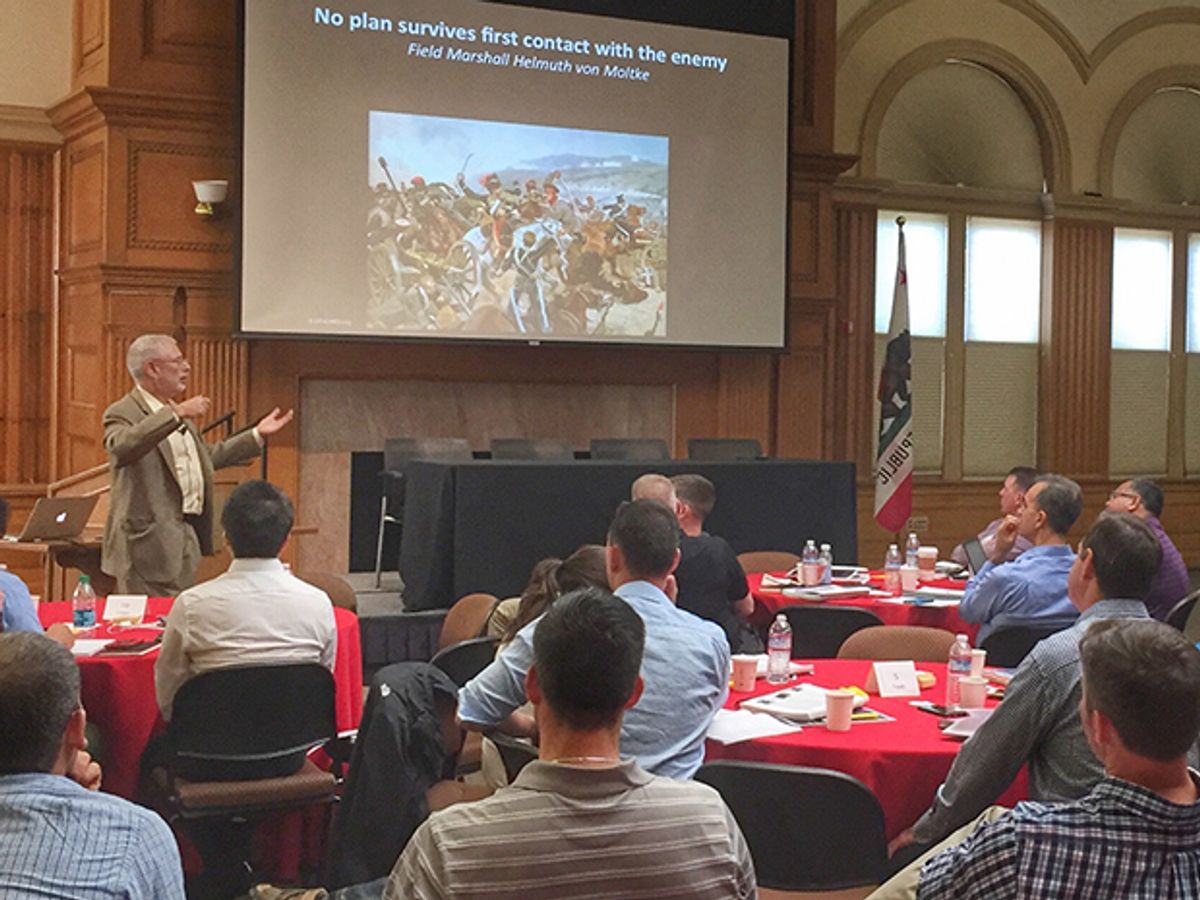This week, U.S. presidential candidate Hillary Clinton called for “tech companies and experts online” to give the United States tools to intercept and prevent online recruiting efforts by terrorist organizations. According to the Los Angeles Times, Clinton “made clear that she would put pressure on the tech firms to step up their efforts to root out terrorists.”
Clinton sees tech firms as the place to go for the kind of technology the United States needs. But let me suggest what might be a better source: tech students.
Last spring, I attended the final presentations of the first-ever “Hacking for Defense” class, in which teams of Stanford University students were given real-world problems by the U.S. National Security Agency, the U.S. Army Cyber Command, and other branches of government. The members of each team had 10 weeks to bring themselves up to speed on a real-world national security or defense related problem, and begin working towards a solution. The progress most teams made was impressive; many pledged to keep going in developing the technologies they had proposed.
Since then, this little Stanford class of 40 people has started a movement. According to Steve Blank, one of the faculty members behind the effort, the organizers of the class held a three-day workshop for other educators looking to teach the class at their schools. Thirteen universities have decided to offer the course—with funding provided by the National Defense University—in the next year. The Stanford group has also obtained commitments from government sponsors to keep sending challenging problems to the students, and worked out a way for the Department of Defense to include classified problems in the mix.
Blank said in a blog post that, as a result of the meetings and workshops, and what they learned during the pilot class, the faculty has fine-tuned the methodology to be more specific about what students deliver to sponsors. This, of course, requires that sponsors actually define the metrics for success in addressing a problem early on. The course developers are also planning to make sure that the government sponsors give teams big-picture briefings about how the sponsoring organization operates, how it’s funded, its overall budget, and general issues the agency or group is facing.
Tekla S. Perry is a senior editor at IEEE Spectrum. Based in Palo Alto, Calif., she's been covering the people, companies, and technology that make Silicon Valley a special place for more than 40 years. An IEEE member, she holds a bachelor's degree in journalism from Michigan State University.



